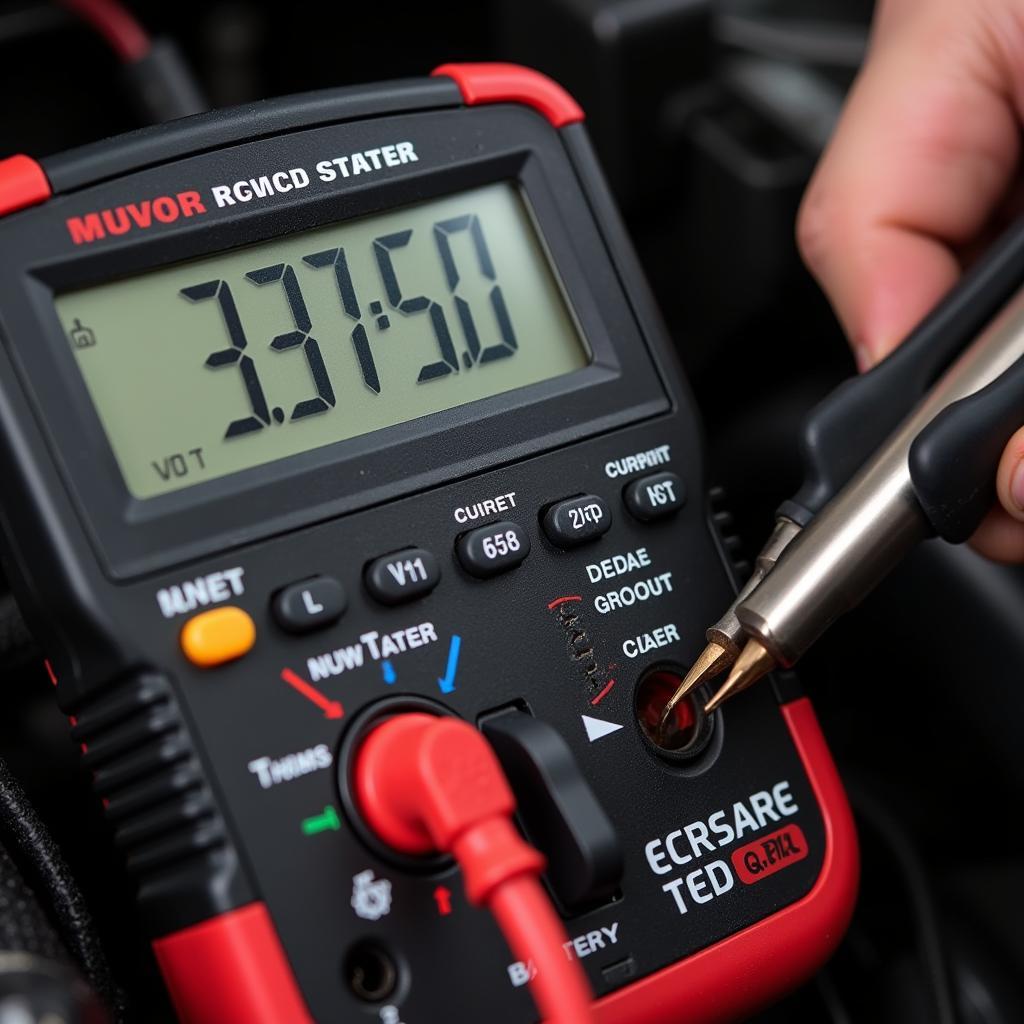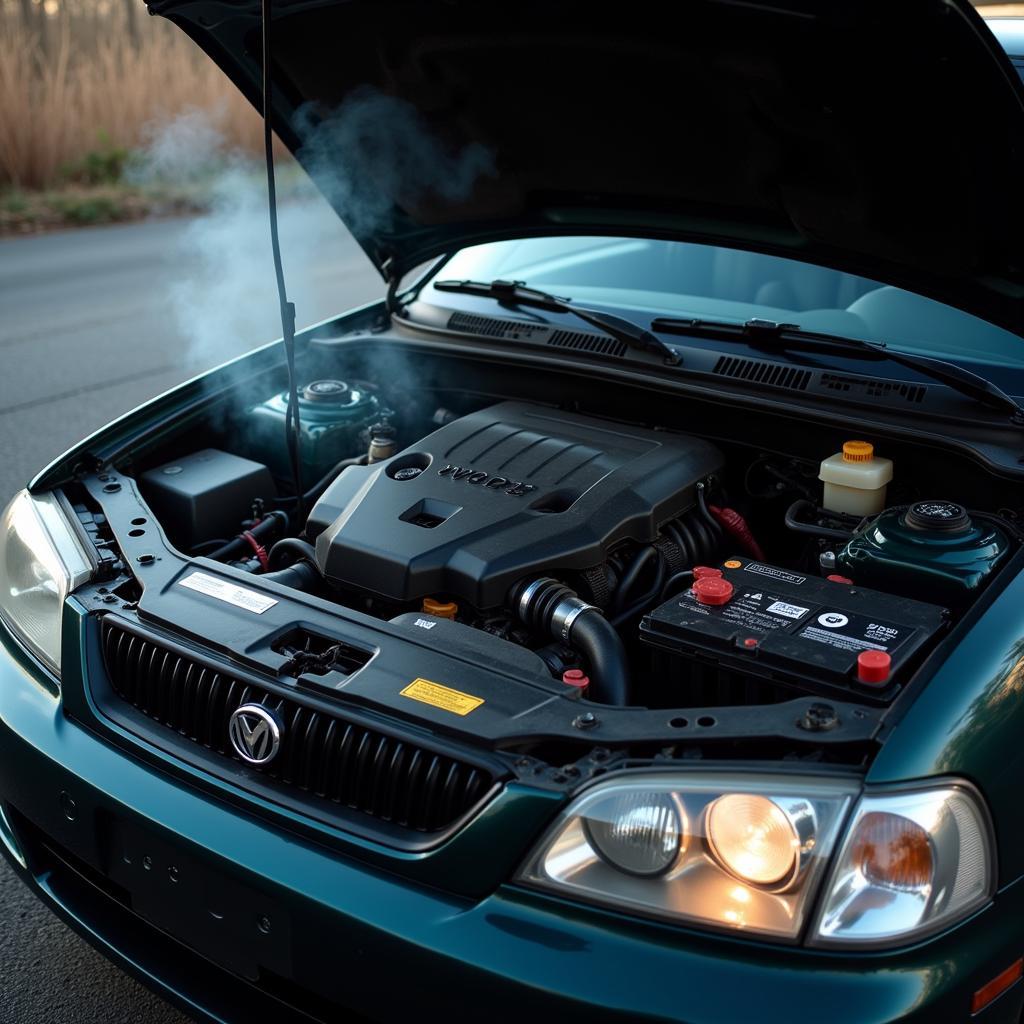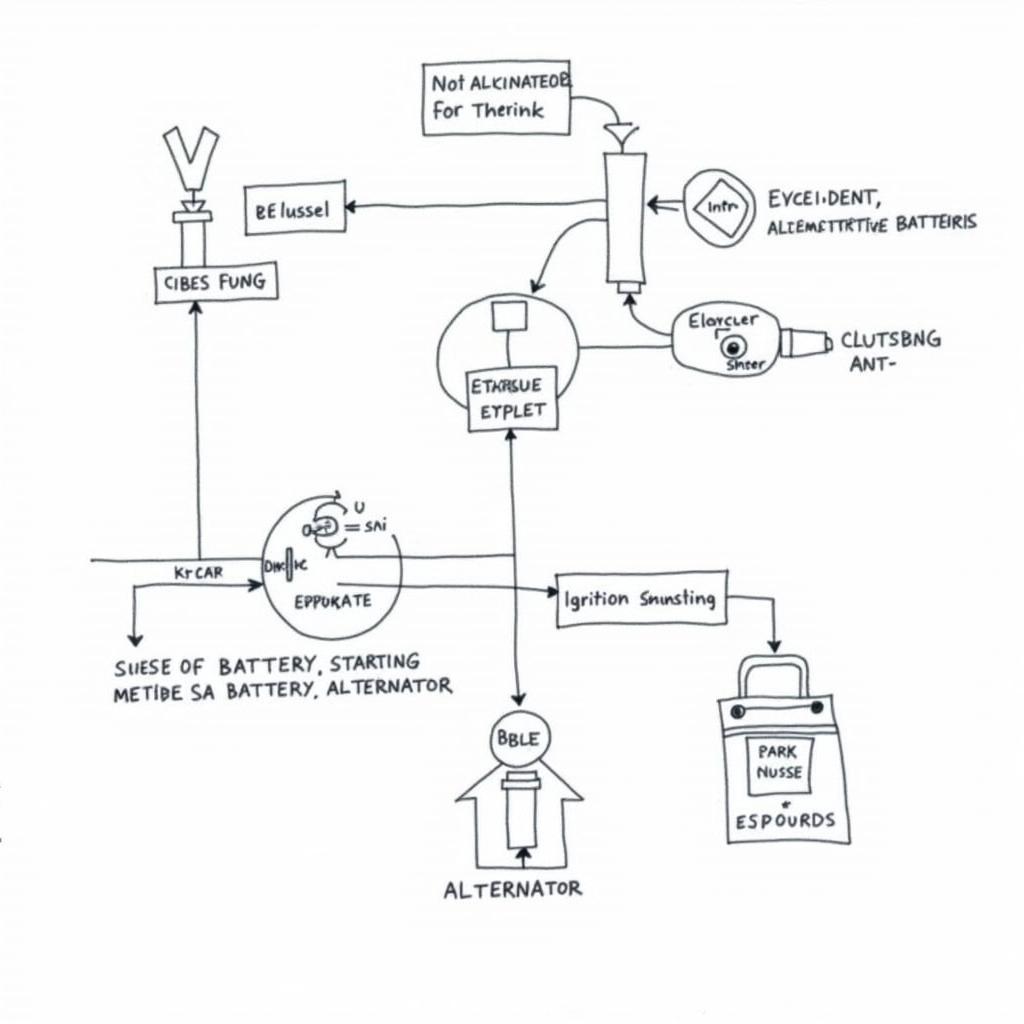Checking for current draw on your car battery is crucial for maintaining its health and preventing unexpected starting issues. A parasitic draw, even a small one, can drain your battery overnight and leave you stranded. This guide provides a step-by-step approach to identifying and resolving excessive current draw issues.
Understanding Current Draw
Every car has a small amount of current draw even when the ignition is off. This is normal and powers essential systems like the clock, radio memory, and alarm system. However, a faulty component or wiring issue can cause an excessive draw, leading to a dead battery.
What is Parasitic Draw?
Parasitic draw refers to the current consumed by electrical components when the car is off. A normal parasitic draw is typically less than 50 milliamps (mA). Anything significantly higher indicates a problem that needs to be addressed. Do you find yourself constantly jump-starting your car? A high parasitic draw could be the culprit. If your 1995 subaru legacy wagon brake warning light stays on, it might contribute to the draw.
How to Check for Current Draw on Your Car Battery
Here’s a step-by-step guide on how to check for current draw:
- Gather your tools: You’ll need a digital multimeter with a DC amp setting (at least 10A) and possibly a wiring diagram for your specific vehicle.
- Prepare your car: Turn off all accessories, lights, and the ignition. Let the car sit for at least 30 minutes to allow modules to go to sleep and reduce false readings. If your 2011 subaru legacy brake warning light stays on, make sure to address that issue separately, as it might contribute to the current draw.
- Disconnect the negative battery cable: Loosen the nut on the negative battery terminal and carefully remove the cable.
- Connect the multimeter: Set your multimeter to the DC amp setting. Connect the red lead of the multimeter to the negative battery terminal and the black lead to the negative battery cable.
- Observe the reading: The multimeter will display the current draw in amps or milliamps. If you encounter a blinking brake warning subaru legacy, address it separately before proceeding with the current draw test.
- Interpret the results: A reading of 50mA or less is generally acceptable. A higher reading indicates a problem.
 Multimeter displaying car battery current draw
Multimeter displaying car battery current draw
Identifying the Culprit
If you have an excessive current draw, you need to pinpoint the source. This can be done by systematically removing fuses one at a time and observing the multimeter reading. When the reading drops significantly, you’ve identified the circuit with the problem. If you’re working on an older model and need a 1996 subaru legacy brake warning wiring diagram, it might be helpful. A 2011 subaru legacy sedan brake warning light issue should be resolved before continuing.
Expert Quote: “A common cause of high current draw is a faulty relay, door switch, or glove box light. Don’t overlook the simple things!” – John Smith, Automotive Electrical Engineer
Conclusion
Checking for current draw on your car battery is a simple yet essential diagnostic procedure. By following the steps outlined above, you can identify and resolve excessive draw issues, preventing dead batteries and keeping your car reliably starting.
FAQ
- What is a normal current draw for a car battery? Typically, less than 50mA.
- What tools do I need to check for current draw? A digital multimeter with a DC amp setting.
- What if my car has a high current draw? Systematically remove fuses to isolate the faulty circuit.
- Can a bad alternator cause a current draw? While a faulty alternator can lead to a discharged battery, it doesn’t typically cause a parasitic draw.
- How often should I check for current draw? It’s a good idea to check periodically, especially if you notice your battery draining faster than usual.
- Is it safe to disconnect the negative battery cable? Yes, but ensure all accessories are off before doing so.
- What should I do if I can’t find the source of the current draw? Consult a qualified automotive electrician.



